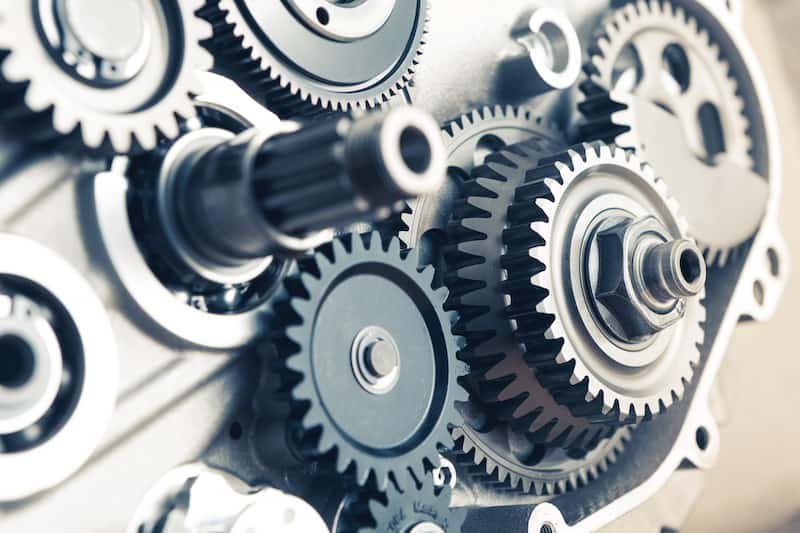
Gear
A gear is a rotating mechanical component with teeth or cogs that mesh with anothergear to transmit power and motion. They are used in a wide variety of machines anddevices to change the speed, torque, and direction of motion.
There are several types of gears, each with its own specific design and function. Here aresome of the most common types of gears:
1.Spur Gears: Spur gears are the simplest and most common type of gear. They have straight teeth that are arranged in a parallel fashion along the gear’s axis. They areused in a wide variety of applications, including cars, clocks, and industrial machinery.
2.Helical Gears: Helical gears are similar to spur gears but have angled teeth thatare arranged in a helix pattern along the gear’s axis. This design reduces noise andimproves smoothness in operation. Helical gears are commonly used in car transmissions and industrial machinery.
3.Bevel Gears: Bevel gears have cone-shaped teeth that allow them to transmit power and motion between two shafts that are at an angle to each other. They are usedin many applications, including power tools, vehicles, and industrial machinery.
4.Worm Gears: Worm gears consist of a worm or screw gear that meshes with a worm wheel. They are used to transmit motion at a right angle and are commonly foundin steering systems, elevators, and industrial machinery.
5.Rack and Pinion Gears: Rack and pinion gears consist of a straight bar (therack) with teeth that mesh with a small gear (the pinion). They are commonly used in steering systems and can convert rotational motion into linear motion.
6.Planetary Gears: Planetary gears consist of a sun gear, planet gears, and a ring gear. They are used in many applications, including car transmissions, industrialmachinery, and robotics.
Overall, gears are essential components in many machines and devices, and the type of gear used depends on the specific application and requirements of the machine or device.
